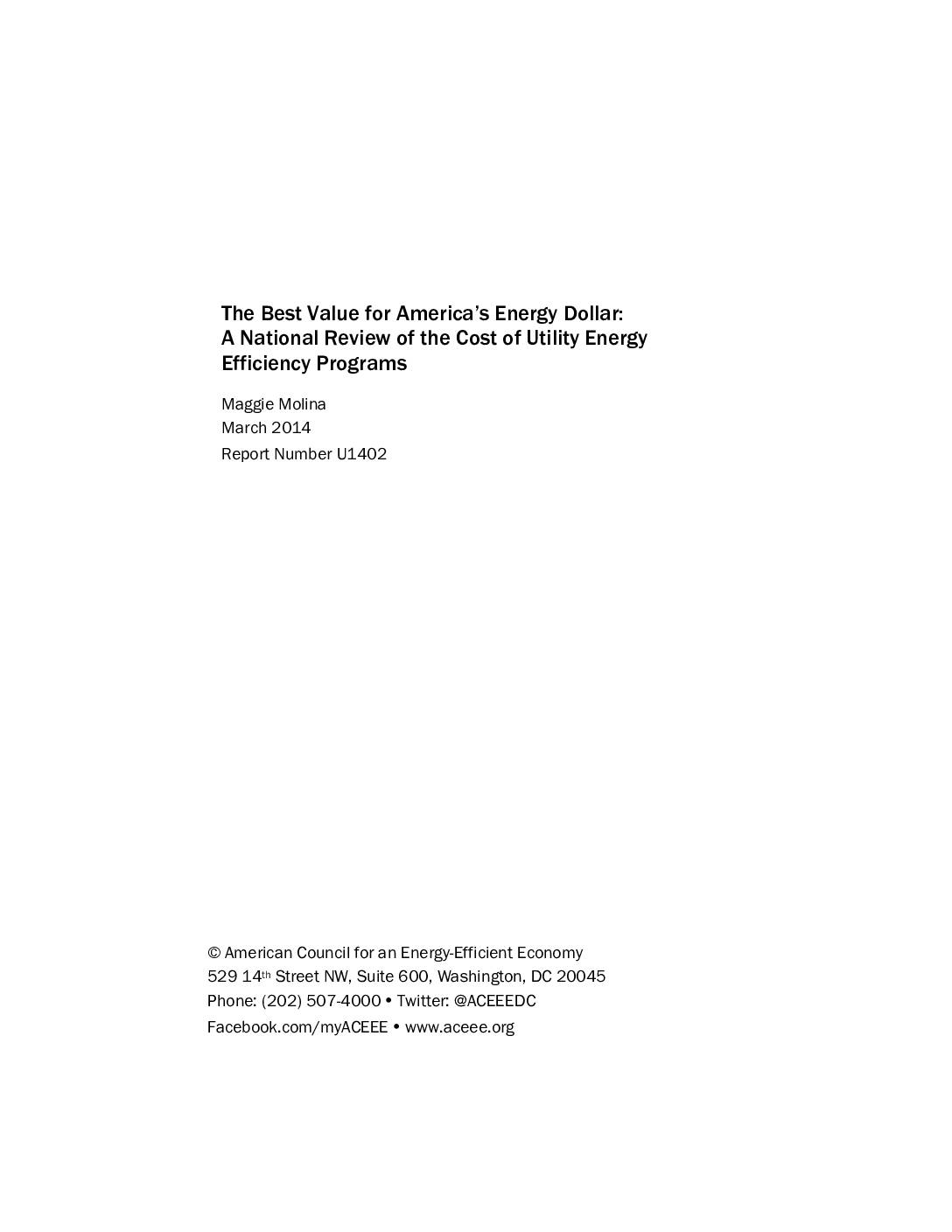As efficiency programs gain wider traction as a utility resource, the need increases in step for high-quality, comprehensive and consistent data metrics on energy efficiency program costs and cost-effectiveness. In this report we review utility-sector energy efficiency program costs in recent years (2009-2012). We collected data from reports by program administrators to calculate the levelized cost of saved energy (CSE), which is the best way to compare energy efficiency to other energy resource options.
We find that energy efficiency programs are holding steady as the least-cost energy resource option that provides the best value for America’s energy dollar. At an average of 2.8 cents per kWh, electric utility energy efficiency programs are about one-half to one-third the cost of alternative new electricity resource options. At an average of 35 cents per therm, natural gas utility energy efficiency programs are less than the current average price of natural gas (39 cents per therm in 2013). These data represent a large number of diverse jurisdictions across the nation (20 states for electricity programs and 10 states for natural gas programs) and show that energy efficiency has remained consistent as the lowest-cost resource, even as the amounts of energy efficiency being captured has increased significantly. We also found that the formatting, nomenclature, and frequency of efficiency program reports vary significantly across jurisdictions. We recommend that states adopt best reporting practices to improve consistency and transparency of the data. (For an up-to-date version of the cost graph, visit the EER topic page.)
Share this

Sectors: Cross cutting, Equipment and appliances, Industry, Power sector, Renewables
Country / Region: Northern America, United States
Tags: economic cost, energy, energy efficiencyKnowledge Object: Publication / Report
Published by: ACEEE
Publishing year: 2014
Author: Maggie Molina
